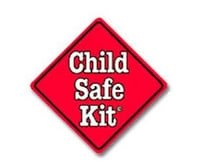How can I make my baby's crib safe?
Choose a crib with bars no more than 2 3/8 inches apart. If the space between the bars is too wide, your baby could slip through and strangle between the bars.
Use a ruler to check the width of the space between the bars. Weave a cloth between the bars if they are too far apart.
The crib should not have corner posts that stick up. Corner posts are an area of the crib that can catch on items that may be wrapped around a child's neck or catch on clothing worn by the child. Unscrew the corner posts or saw them off.
The mattress should fit snugly against the sides of the crib. An infant can suffocate if its head or body becomes wedged between the mattress and the sides of the crib. No more than 2 fingers should fit between the mattress and the side of the crib. Place rolled towels between the mattress and the crib if the mattress is too small.
In 2011, a new U.S. crib safety standard did away with the option of having one side of the crib drop down, because this drop-side “feature” was responsible for infant deaths. If you buy a new crib, this will not be an issue, but a crib manufactured before 2012 may have the drop-side “feature” risk built in. You can defeat the risk in an older crib if you can use screws that permanently attach the drop side into the end posts (or otherwise modify the crib) in a way that the drop-side can no longer drop down.
When your baby can push up, you should remove bumpers, pillows, and toys from the crib, including toys that are strung across the crib or a playpen. Your baby can step on these things or use them to climb out of the crib and fall.
What else can I do to keep the bedroom safe?
Remove any cords that could get around the baby's neck. Keep the crib away from electric cords, drapes and curtain cords, or tie up the cords so they are less than 6 inches long and out of your child's reach. Mobiles and hanging crib toys should also be kept out of your baby's reach. Remove strings on crib toys and pacifiers.
How can I make the kitchen safe?
Turn pot handles toward the back of the stove. Use the back burners on the stove for cooking.
Keep hot foods and drinks out of reach and away from the edge of a counter or table. Keep knives and other sharp objects out of reach or in locked or "childproof" drawers or cabinets. Wind up appliance cords and keep them out of reach.
How can I keep medicines and poisons out of reach?
Keep medicines, vitamins, cleaning supplies and other poisons in locked cabinets. Children can't tell the difference between medicine and candy.
If your child swallows something he or she shouldn't, call a poison control center right away. Keep the telephone number by your phone. The national poison control hotline number is 1-800-222-1222.
How can I make bath time safe?
Since children can drown in very little water, you should always stay with your child when he or she is in the bathtub. NEVER leave your child alone or with an older child in the bathroom or tub – not even for a minute. If you have to answer the phone or door, take your child with you.
Always test the water before putting your child in the tub. Young children have tender skin and are easily burned if the water in the sink or bathtub is too hot.
Set your water heater to 120°F or less. To check the temperature of the hot water from the faucet, run the water over a meat or candy thermometer for 3 minutes.
Keep electrical items such as hair dryers away from the water. Unplug them when you aren't using them. They can cause an electric shock if they fall into the sink or bathtub while they're plugged in.
How can I be sure toys are safe?
- Choose carefully when shopping for toys. Look for toys that are well made and appropriate for your child’s age.
- Watch out for toys that have sharp edges, small parts, or sharp points.
- Young children pull, prod, and twist toys. Look for toys with tightly secured parts.
- Look for safety information on the toy or label such as "Not recommended for children under 3 years of age," or "non-toxic" on toys likely to end up in a child's mouth. Look for "washable/hygienic materials" on stuffed toys and dolls.
- Avoid marbles, balls, games with balls, and other toys that have parts smaller than 1 3/4 inches in diameter or smaller than 2 inches long. These products can choke young children if swallowed.
- Keep toys meant for older children away from babies and toddlers.
What about houseplants?
Plants should be placed out of your child's reach. Some houseplants are poisonous. Call your local poison control center to find out if your plants are poisonous.
How can I make stairs safe?
Use toddler gates at the top and bottom of stairs. Do not use gates with big spaces between the slats – children can get trapped in the openings.
How can I make windows safe?
Keep children away from windows to prevent falls. Screens are made to keep bugs out – not to keep children in. Use window guards to keep children from falling. Keep chairs and other furniture away from windows so children can't climb up. If possible, open windows from the top, not the bottom.
Other safety tips
- Keep plastic bags and deflated or burst balloons away from young children.
- Use plastic inserts to cover electric outlet openings that are not being used.
- Keep alcohol and cigarettes out of reach.
- Keep guns and other firearms out of the house. If guns are in the house, unload them, put them in a locked place, and keep the keys out of your child's reach. Store the gun in a separate place from the bullets.
- When your baby is placed on anything above the ground, like a changing table, always stand close with your hand on your baby.
- Lock matches and lighters in a cabinet that is higher than your shoulders.





